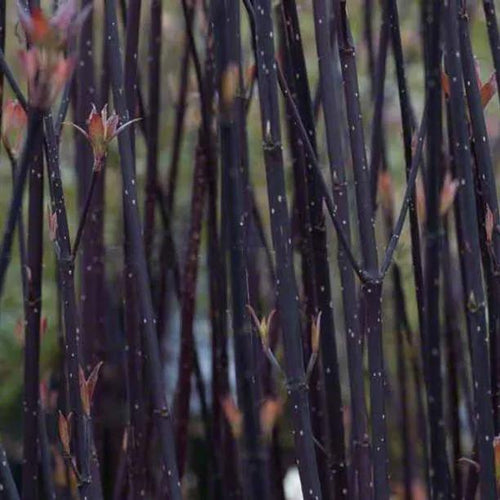Kesselringii Purple Dogwood Plants
Cornus alba Kesselringii is a vigorous shrub with fabulous deep purple, almost black, young bark rich green foliage that turns a deep wine red in autumn.
It's usually hard pruned as a specimen shrub, but like any dogwood it could go in a mixed hedge to add a little colour.
Very dark bark makes exciting contrasts in a mixed group of dogwoods such as golden-green Flaviramea and bright red Sibirica. Striking when there is snow on the ground.
The dark stems are also great for arranging with cut flowers. It prefers a sunny spot and is suitable for any soil but will grow happily in a bog. Cornus alba Kesselringii will reach 3 metres.
View our full selection of dogwood shrubs.
Cornus alba Kesselringii plants are delivered bareroot during winter (Nov-April). Their height is measured in centimetres above the ground (roots or pots aren't measured).
History & Trivia
This variety was bred at the start of the 20th century and is a flower arranger's favourite.

 Secure, One-Tap Checkout
Secure, One-Tap Checkout
 Hand Picked, Delivered to Your Door!
Hand Picked, Delivered to Your Door! 1 Year Bareroot Guarantee
1 Year Bareroot Guarantee






